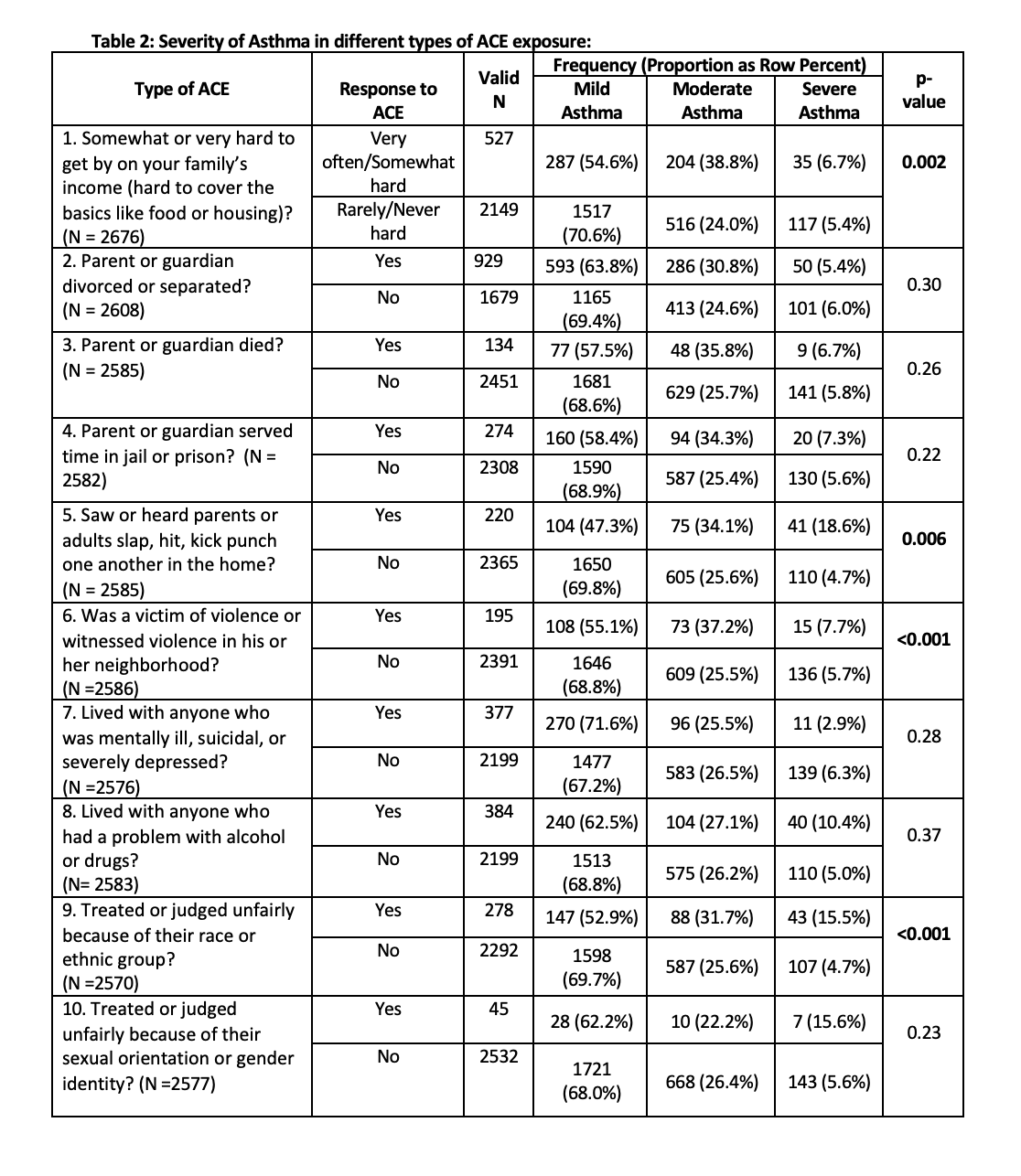Health Equity/Social Determinants of Health
Health Equity/Social Determinants of Health 4
427 - Association between Adverse Childhood Experiences and Current Asthma in Children
Publication Number: 427.219
- FK
Fernanda E. Kupferman, MD (she/her/hers)
Vice chair and Residency Program Director
One Brooklyn Health @ Brookdale Hospital Medical Center
Brooklyn, New York, United States - SP
Sai Sarada Policherla (she/her/hers)
Resident
Brookdale university hospital medical center
Brooklyn, New York, United States
Presenting Author(s)
First Author(s)
Background:
The development and the progression of asthma are multifactorial. Adverse Childhood Experiences (ACEs) might affect both the prevalence and severity of asthma due to a stress response that can impact lung development, inflammation, and the immune system.
Objective: To assess the association between exposure to ACEs and current asthma and its severity levels in 6-17 year-old-children.
Design/Methods:
This is a retrospective observational study, with secondary data analysis from the 2020 National Survey of Children’s Health comparing the association between asthma in children 6 – 17 years with and without ACE exposure. Participants answered survey questions using a Screener Questionnaire and Topical Questionnaire. Children with no parental response to ACEs and asthma questionnaire were excluded. Independent variables were age, gender, race and the type of ACE exposure (Table 1). Outcome variables were the prevalence of asthma and its severity levels. Data were analyzed using the SPSS Complex Samples version 26. Logistic regression analysis was conducted to investigate the best predictor of each outcome variable.
Results:
A total of 29,480 of eligible subjects participated in the study. Of these, 1342 (4.6%) had prior asthma and 2681 (9.1%) had current asthma. Among the ones with current asthma, 1809 (67%) had mild, 720 (27%) had moderate and 152 (6%) had severe asthma.
Current asthma was more prevalent in children exposed to ACEs. Furthermore, current asthma was significantly associated with most type of ACEs (9 out of 10) (Table 1). In addition, ACEs exposure was associated with increased asthma severity (Table 2). Exposure to low income, domestic violence, neighborhood violence, and racial discrimination had a significant association with moderate and severe asthma (Fig 1.2).
Conclusion(s):
There was an increased prevalence of current asthma among children exposed to ACEs. In addition, exposure to ACEs was associated with increased asthma severity compared to non-exposed children..png)

.png)
